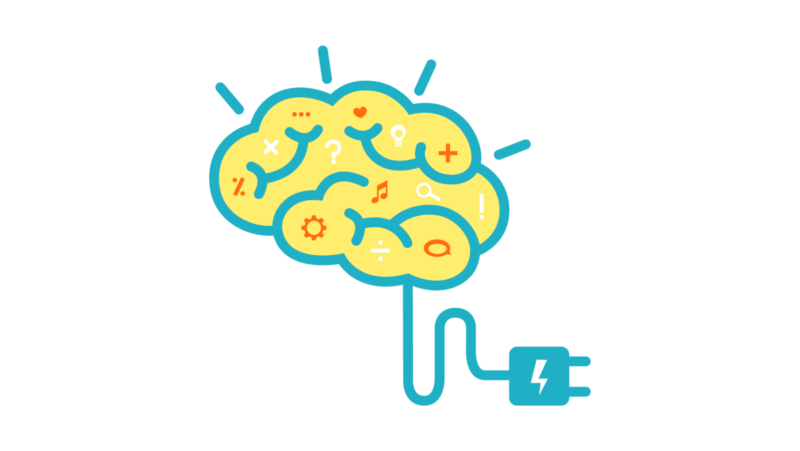Insights
Brain Breaks for Better Math: Fun Activities to Refocus and Recharge
While working on a math problem, a student was overheard saying, “My brain hurts.” As a teacher, you have probably heard similar comments and could even agree with your students at times. Our brains work hard when doing math. All of the numbers, skills, and solutions… Oh my! Math takes a lot of focus and mental energy. Therefore, it is important to take periodic “brain breaks” to refocus and recharge before continuing to work.
The Benefits of Brain Breaks
- Improved focus and concentration
- Reduced stress and anxiety
- Fresh perspective upon return to work
- Improved overall well-being
Studies have shown that a resting brain (i.e. a brain taking a break) replays information it just practiced which can lead to better retention of the information. Research on brain breaks has been proven to aid in refocusing and recharging. Neurotransmitters are essential brain chemicals that transmit messages between nerve cells at gaps called synapses. These message carriers are crucial for maintaining focused attention, staying calm, and forming new memories. However, neurotransmitters can deplete quickly, especially during repetitive learning activities (focused listening, note-taking, completing multiple math problems in a row, etc.). Brain breaks, which involve changing the type of mental activity, help replenish neurotransmitters by shifting brain communication to different networks, allowing the brain chemicals to recharge.
Remember that teachers need a brain break too! Depending on the maturity of your students, some of the activities listed below can be student-led so you can have a short break from talking. Allow yourself to simply sit and watch your students, resisting the urge to use those few minutes on another task like grading. Or if you feel you need a break from looking at the kids, take the time to file papers. You can still listen to the students but can visually focus on something else for a moment.

Tips for Using Brain Breaks
- Keep brain breaks to about five minutes or less.
- Use a countdown timer so students know when it’s time to get back to the lesson.
- Schedule breaks throughout the day and make reminders for yourself. It is easy to get so focused on what you’re teaching that you forget to allow time for a brain break.
- Create a master list or set of cards with various brain breaks. This will keep you from having to think of one on the spot. It is recommended that you choose, or allow a student to choose, the brain breaks before the lesson begins so you have time to gather any supplies or have any videos queued.
Ready for some fun activities to use as brain breaks to refocus and recharge during a math lesson? Keep reading!

Brain Breaks Involving Movement (With and Without Music)
- Simon Says (math version): Give students math-related commands such as “Jump 5 times” or “Clap 3 times” and see how quickly they can follow along. Remember they can only do the action if Simon says. If you say the action without saying “Simon says…” before it, and they do the action, then that student is out and has to sit down. Be sure to say “Simon says stop” to get them to stop doing the action!
- Charades: Have a set of cards for students to choose from. Be sure the topics are ones your class would be familiar with (i.e. animals, transportation, actions, sports, etc.). If needed, tell the class which category of topic it is. Divide the class into two or more teams. Set a time limit for each round, typically around 1-2 minutes. One player from the first team will select a card and act it out without speaking or making any sounds. The other players on their team will try to guess what it is based on their actions. The other teams will have a chance to guess the word after the time limit is up. If a team correctly guesses the word, they earn a point. The team with the most points wins!
- Classroom scavenger hunt: Create several sets of lists with items or features located around your classroom. Students then have to walk around the room to locate the items/features, checking them off on their list as they find them. They cannot just look for it from their seat; they have to move to where that item/feature is located. Examples of items are a clock, hook, door knob, curtain, teacher’s desk, plant, filing cabinet, 3rd bookbag, 12th bookbag, a desk in the back corner of the room, a desk in the front row, etc. Features could include colors, shapes, size (i.e. something bigger than your bookbag, something smaller than your hand), etc. Students could also look for items or features that start with various letters of the alphabet.
- Go/Stop: Give students an action and then say go. They continue the action until you say stop. For example, “Clapping, go!” Students continue clapping until you say, “Stop.” Action ideas are stomping, arm circles, marching, running in place, hopping on one or two feet, kicking feet forwards or backward, stepping from side to side, wiggling hands, opening and closing hands, lightly tapping head, etc.
- Cups up or down: spread plastic cups all over the floor with some standing up (like you’d pour a drink into) and some facing down. Divide students into two teams, one for cups up and one for cups down. Set a timer for 30 seconds. Students race to turn over as many cups as they can in the direction of their assigned team. Play several rounds. If floor space is limited, have smaller groups that only play once.
- Trash can ball: Separate the class into two teams. Set up small trash cans or buckets in a line going away from students. Each can has a point value listed on it, increasing as the trash can is farther away. Crumble up notebook paper into a ball. Have students take two turns throwing the trash towards the bucket. Have a scorekeeper for each team. The team with the most points once everyone has had a turn wins.
- Active Maths – Directions Dance for kids
- Jack Hartman Kids Brain Breaks Playlist
- I Moves Active Blast Resources

Brain Breaks Focused on Mindfulness and Calming Activities
- Practicing mindfulness through counting: Have students practice deep breathing exercises while counting to 100 by 1s, 2s, 5s, and 10s.
- 54321: Have students share with a partner 5 things they see, 4 things they feel, 3 things they hear, 2 things they smell, and 1 thing they taste. The smell and taste can be things they want to smell or taste.
- Do or say nothing for two minutes. Use a visual timer or play a soothing video of waves and soft music. Allow students to close their eyes or even put their heads down if they want.
- Practice 4-7-8 breathing: Inhale through your nose for four counts, hold the breath for seven counts and then exhale from your mouth for eight counts. Repeat several times. Either verbally guide students by counting aloud or count with your fingers only so you can participate in the breathing activity too. You can also use a video to guide the breathing.

Miscellaneous Brain Break Ideas
- Allow students to color a picture or draw their own for a few minutes. Make sure they’ve already picked out their picture beforehand so they don’t spend the whole time deciding.
- Have several puzzles stationed around the room that small groups of students can work on for a few minutes.
- Categories: Call out a category and have students take turns saying a word that fits in that category. For more of a challenge, have students call out something that belongs in the category for each letter of the alphabet. Category ideas include ocean animals, things in the kitchen, things at a baseball game, fruits and vegetables, etc.
- Would you rather?: Divide students into partners or small groups. Have them take turns reading “would you rather” cards and sharing their chosen answers.
- 64 Educational Brain Breaks Your Students Will Love
- 80 Brain Break Activities For Kids From K To 12 (Free Downloadable PDF Included!) – ClassPoint Blog
So next time you hear a student groan about their brain hurting, assure them it’s totally normal. Taking short breaks to refocus and recharge can actually improve concentration, reduce stress, and even boost memory. Brain breaks benefit everyone in the classroom, so don’t forget to take one yourself, teacher!



